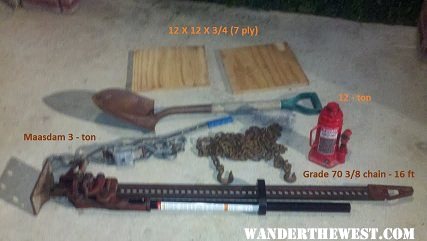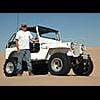
+ 2 - 3/4" x 12 x 12 7 - ply SYP pads
+ 1 D - handle spade
+ 1 Maasdam "3 ton" power pull (3/16 cable)
+ 16' X 3/8" Grade 70 chain
+ 1 12 - ton hydraulic jack
+ 48" hi - lift
Everything except the plywood and shovel are leftovers from my dairy farming / woodsman days. Back then, I didn't think much about how dangerous the situation was -- we just did what we "had to" to make a buck.
Not shown are my 12V air compressor and tire deflators.
Up until this recent discussion I thought I was "OK", since I've used the winch, chain, hi-lift on tractors and bigger trucks.
Wishful thinking?
What else should I carry (do you think)?




















